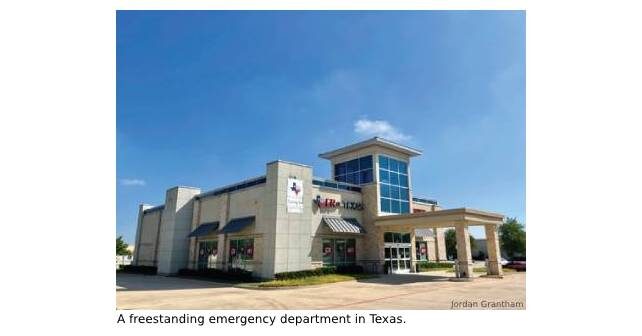
The Cleveland Clinic has developed a hub-and-spoke acute care model that, if applied more broadly, could address three emergency medicine priorities: increasing job availability for emergency physicians, providing improved experience of care to mid-acuity patients, and broadening access to emergency care in rural America.
Explore This Issue
ACEP Now: Vol 41 – No 09 – September 2022The hubs are large traditional hospitals, including Cleveland Clinic Main Campus. The spokes are smaller community hospitals and freestanding emergency departments (ED) in surrounding communities. Harvard Business Review discussed this model in “The Strategy That Will Fix Health Care”.1 Other health systems have opened freestanding EDs using similar strategies. This article focuses on Cleveland Clinic because they have published their outcomes in detail.
ACEP projected in “The Emergency Medicine Physician Workforce: Projections for 2030” that the “specialty of emergency medicine is facing the likely oversupply of emergency physicians.”2 Supply-side solutions, such as decreasing the number of emergency medicine residency spots or entry into the specialty, are unlikely to occur at least in the near term.
Ways to increase demand for emergency physicians, while providing high value patient care, are worth considering. Expanding the hub-and-spoke approach to emergency care delivery is one such solution.
Opening more health system affiliated freestanding EDs increases demand for emergency physicians in three ways. First, in the United States, two percent of patients leave EDs prior to being seen by a clinician.3 At freestanding EDs affiliated with an academic institution, the leave without being seen (LWBS) rate is only 0.4 percent.4 As there are 130 million ED visits in the U.S. per year, a LWBS rate decrease of one percent would translate to 1.3 million more patients to be seen by emergency clinicians annually.4,5
Second, health system-associated freestanding EDs increase demand for emergency medicine by providing mid-acuity patients with a better experience than they would otherwise receive in a larger hospital-based ED. Cleveland Clinic’s freestanding EDs see proportionally more ESI 3 and 4 patients (midacuity), while their hospital-based EDs see more triage level ESI 1, 2 and 5 (highest and lowest acuity) visits.6 Patients reported choosing the freestanding over a hospital-based emergency department because of better access to needed testing, convenience, and “ED does a better job diagnosing and treating me.”7 Discharged ED patients rate their experience more favorably at Cleveland Clinic’s freestanding EDs than at their hospital-based EDs.8
Third, emergency medicine training is essential for physicians hired to work at a health system affiliated freestanding ED. Most freestanding EDs do not have rapid access to consultants. Much like at rural EDs, a physician working at a freestanding must have expertise in airway management, critical procedures, and trauma stabilization.
Pages: 1 2 3 4 | Single Page




No Responses to “Freestanding Emergency Departments as a Workforce Solution”